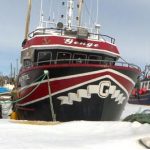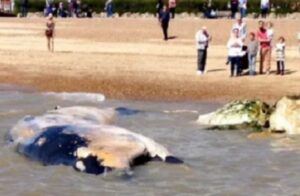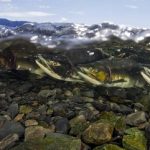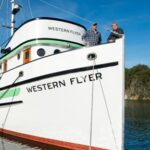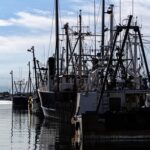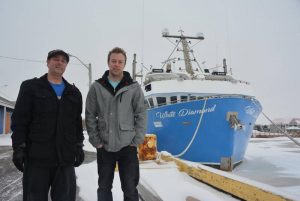A CLEAN SWEEP ON THE OCEAN FLOOR By DON CUDDY
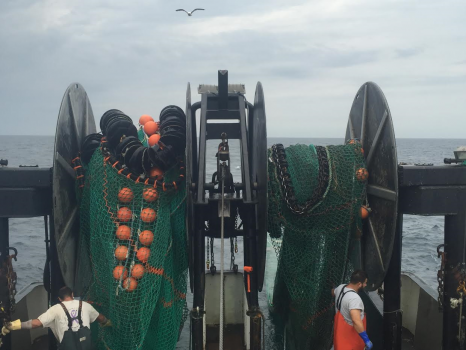 Most of the reporting in the media about commercial fishing and declining stocks in the Northeast dwells on how dire the situation has become with the fault generally attributed to fishermen and “overfishing.”
Most of the reporting in the media about commercial fishing and declining stocks in the Northeast dwells on how dire the situation has become with the fault generally attributed to fishermen and “overfishing.”
The view on the waterfront is very different however. Fishermen have long maintained that there is a huge disconnect between what they see on the water and the conclusions derived from the NOAA surveys and stock assessments. Their claims have been dismissed as self-serving. Now it seems the fishermen have a strong case. On a recent bottom trawl survey, a typical industry net caught four times as many flatfish as the rig used on the government trawl surveys.
For years fishermen have clamored for more collaborative research using industry vessels. They were largely ignored. But in August, Dr. Bill Karp, director of the Northeast Fisheries Science Center in Woods Hole, revealed a plan for NOAA Fisheries to shift all or part of its trawl surveys from its research vessel, the Henry B. Bigelow, to commercial fishing boats. At the same time, from August 7-21 the Point Judith fishing vessel Karen Elizabeth was at sea conducting a twin-trawl survey on behalf of the Science Center with a team of scientists working alongside the crew.
The boat was rigged to tow two nets simultaneously, each of the type used on the Bigelow, with one significant difference. One net was fitted with a rockhopper and the other had a chain sweep. Because different fish species behave differently, fishermen use a chain sweep, attached to the leading edge of the net and in contact with the sea floor, when targeting flatfish such as witch flounder. These fish hide in the sediment on soft bottom to evade predators. You will hear fishermen refer to fishing boats with rockhoppers as “hard bottom boats” because those boats typically go after other species such as cod and haddock which tend to be found over rocky or gravel bottom.
The Bigelow uses a rockhopper on every tow, despite surveying in our multispecies fishery. That is because this gear allows nets to be towed across a variety of habitats. A net equipped with a chain sweep is prone to snag on a rocky bottom. Its exclusive use of a rockhopper has been a point of contention with the fishermen since the Bigelow commenced operations in these waters. Fishermen openly questioned its accuracy in estimating flatfish abundance. The survey work on the Karen Elizabeth has provided the evidence that their skepticism is well founded. Here are some relevant quotes taken from the Science Center’s own paper, authored by the scientists who were on the Karen Elizabeth to conduct the study:
“On average, catch rates in the experimental chain sweep gear were about 4-fold the catch rates of the rockhopper sweep gear used on the standard survey.”
And here are some actual figures, also taken directly from the report: “A total of 53,495 witch flounder were caught during the 118 representative tows of the twin trawl, with 43,789 caught in the net with the experimental chain sweep and 10,706 caught in the net with the rockhopper sweep.”
These observations come as no surprise to the industry but it is startling to consider that our groundfishermen, many of whom are in straitened circumstances because of low catch limits, are constrained by surveys that are evidently underestimating stock abundance by a large factor, certainly with respect to witch flounder which were the principal focus of this study and more than likely with some of the other flounders such as yellowtail.
Chris Roebuck, owner and captain of the Karen Elizabeth told me that the witch flounder (fishermen know them as grey sole) caught on the survey trip amounted to 30,000 pounds which represents 4 percent of the TAC (total allowable catch) allotted to the fishing fleet for the whole year. On just one boat and in just two weeks! In theory a single boat could catch the entire yearly quota if it kept on fishing.
This example illustrates the fact that serious problems plague fishery management in New England. These problems are not, as some would have us believe, all attributable to rapacious fishermen. Groups with an agenda antithetical to fishing have been trying to sell the idea that the problems stem from “too many boats chasing too few fish.” In truth there are not many boats left and there are certainly a lot more witch flounder out there than the people at NOAA thought. I might also add that this is one of the best fish you could ever hope to find on your dinner plate.
The takeaway here is that solutions can be found if people continue to work together. NOAA Fisheries deserves credit for the willingness to partner with fishermen in undertaking this survey. The industry is hoping that it is an indication that the culture within NOAA is changing. We will withhold judgement until December when we learn whether the data gathered here will be accepted and incorporated into the next stock assessment.
Don Cuddy is program director at the Center for Sustainable Fisheries.


































